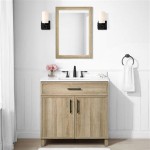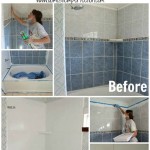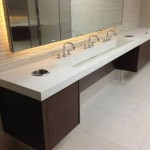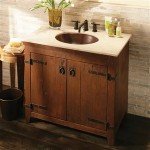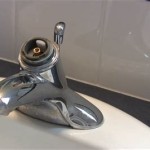Bathroom Vanity Mirror Images: A Comprehensive Guide
The bathroom vanity mirror is a crucial element in any bathroom design, serving not only a functional purpose but also contributing significantly to the overall aesthetic. The images reflected in a vanity mirror play a vital role in daily routines, from grooming and makeup application to assessing one's appearance. Understanding the interplay between mirror type, lighting, and placement is essential to optimizing the reflected image and creating a functional and visually appealing bathroom space.
Choosing the right bathroom vanity mirror involves considering several factors, including size, shape, style, and features. The choice heavily influences the perceived size and brightness of the bathroom, as well as the accuracy and clarity of the reflected image. Furthermore, the way the mirror is illuminated impacts the quality of the reflection, affecting how colors are perceived and how effectively one can perform tasks that require precision.
This article explores the various aspects of bathroom vanity mirror images, providing a detailed understanding of the key considerations that contribute to a well-designed and functional reflective surface. We will delve into the different types of mirrors available, the importance of adequate lighting, and the influence of mirror placement on the overall bathroom design.
Understanding Mirror Types and Their Impact on Reflected Images
The type of mirror used in a bathroom vanity directly affects the quality and characteristics of the reflected image. Different manufacturing processes and materials yield varying levels of clarity, reflectivity, and durability. Understanding these differences is crucial for selecting a mirror that meets both functional and aesthetic requirements.
Standard glass mirrors, typically made with a silver or aluminum backing, are the most common type found in bathrooms. These mirrors offer a good balance between cost-effectiveness and image quality. However, variations exist within this category. Higher-quality mirrors use thicker glass and a more refined backing process, resulting in a clearer and more accurate reflection. Thinner glass mirrors may exhibit slight distortions or a less vibrant image.
Beveled mirrors add a decorative element to the bathroom while slightly altering the reflected image. The beveled edge, typically angled, creates a frame effect, which can enhance the overall aesthetic. However, the beveled edge also introduces a slight distortion, particularly at the perimeter of the reflected image. This distortion is generally minimal and does not significantly affect the usability of the mirror.
Magnifying mirrors are specifically designed to enlarge the reflected image, making them ideal for tasks that require close-up detail, such as applying makeup or grooming facial hair. These mirrors are available in a range of magnifications, typically from 5x to 10x. While magnifying mirrors offer enhanced detail, they also distort the overall image, making them unsuitable for general viewing. They are most often used as supplementary mirrors in conjunction with a standard vanity mirror.
Anti-fog mirrors are treated with a special coating or heating element that prevents condensation from forming on the surface during and after showers. This feature ensures a clear and unobstructed reflected image, even in humid bathroom environments. Anti-fog mirrors are particularly beneficial for individuals who value convenience and require immediate access to a clear reflection after showering.
Smart mirrors are emerging as a popular option, integrating technology into the traditional mirror design. These mirrors often feature built-in LED lighting, touch controls, and connectivity to smart devices, providing access to information such as weather forecasts, news updates, and music streaming. While smart mirrors offer enhanced functionality, the quality of the reflected image remains dependent on the underlying glass and backing materials used in their construction.
The Crucial Role of Lighting in Enhancing Vanity Mirror Images
Proper lighting is paramount in achieving accurate and flattering bathroom vanity mirror images. The type, intensity, and placement of lighting fixtures significantly influence how colors are perceived, how shadows are cast, and how effectively one can perform tasks in front of the mirror. Inadequate or poorly positioned lighting can distort the reflected image, making it difficult to accurately assess one's appearance.
Natural light is generally considered the most desirable source of illumination for bathroom vanity mirrors. Sunlight provides a balanced spectrum of colors, resulting in a clear and accurate reflection. However, relying solely on natural light is often impractical, particularly in bathrooms with small windows or those located in interior spaces. Therefore, artificial lighting is typically necessary to supplement natural light and provide consistent illumination.
Sconces mounted on either side of the vanity mirror are a common and effective lighting solution. This placement provides even illumination across the face, minimizing shadows and ensuring a balanced reflection. The height of the sconces should be carefully considered to avoid casting shadows under the eyes or chin. Generally, positioning the sconces at eye level is recommended.
Overhead lighting, such as recessed can lights or a pendant fixture, can provide general ambient illumination for the bathroom. However, relying solely on overhead lighting for the vanity area can create harsh shadows and an unflattering reflected image. It is generally best to supplement overhead lighting with sconces or other task-specific lighting fixtures.
LED (light-emitting diode) lighting is increasingly popular for bathroom vanity mirrors due to its energy efficiency, long lifespan, and ability to produce a variety of color temperatures. LED bulbs are available in a range of color temperatures, measured in Kelvin (K). Warmer color temperatures (around 2700K to 3000K) create a soft, inviting atmosphere, while cooler color temperatures (around 4000K to 5000K) provide a brighter, more energizing light. For bathroom vanity mirrors, a color temperature in the range of 3000K to 4000K is generally recommended to provide a balance between warmth and clarity.
Integrated LED lighting, built directly into the vanity mirror, is another option for achieving optimal illumination. These mirrors often feature adjustable brightness and color temperature settings, allowing users to customize the lighting to their preferences. Integrated LED lighting can provide a sleek and modern aesthetic while eliminating the need for separate lighting fixtures.
Dimmable lighting controls are beneficial for adjusting the intensity of the light based on the time of day and the task being performed. Dimming the lights can create a more relaxing atmosphere in the evening, while increasing the brightness can provide optimal illumination for tasks that require precision.
Mirror Placement and Its Influence on Bathroom Aesthetics and Functionality
The placement of the bathroom vanity mirror significantly impacts the overall aesthetics and functionality of the space. Proper mirror placement can enhance the perceived size of the bathroom, maximize natural light, and create a more visually appealing environment. Conversely, incorrect mirror placement can make the bathroom feel cramped, dark, and unbalanced.
The size of the mirror should be proportionate to the size of the vanity and the overall bathroom. A small mirror over a large vanity can appear unbalanced, while an excessively large mirror in a small bathroom can feel overwhelming. Generally, the mirror should be at least as wide as the vanity and preferably slightly wider. The height of the mirror should also be considered, ensuring that it provides adequate coverage for all users.
Hanging the mirror at an appropriate height is essential for ensuring that all users can comfortably see their reflection. The bottom edge of the mirror should typically be positioned a few inches above the countertop, while the top edge should be at least a few inches above the tallest user's head. This placement provides a clear view without requiring users to strain their necks.
The position of the mirror in relation to the light source is also critical. Placing the mirror directly opposite a window can maximize natural light and create a bright and airy atmosphere. However, it is important to consider the potential for glare and reflections, which can be distracting. Positioning the mirror at an angle to the window can help to mitigate these issues.
Multiple mirrors can be used to create a more spacious and visually interesting bathroom design. Two separate mirrors over a double vanity provide individual reflection spaces for each user. Alternatively, a single large mirror that spans the entire length of the double vanity can create a sense of continuity and openness.
Frameless mirrors offer a sleek and minimalist aesthetic that can complement a variety of bathroom styles. These mirrors lack a frame, which allows them to blend seamlessly into the surrounding decor. Frameless mirrors are particularly well-suited for modern and contemporary bathrooms.
Framed mirrors add a decorative element to the bathroom while defining the boundaries of the reflective surface. The frame can be chosen to complement the other fixtures and finishes in the bathroom, creating a cohesive and visually appealing design. Framed mirrors are available in a wide range of styles, from traditional to contemporary, allowing homeowners to customize the look of their bathroom.
Tilt mirrors offer adjustable viewing angles, making them ideal for users of different heights or for tasks that require a specific perspective. These mirrors can be tilted up or down to provide a comfortable and convenient viewing experience.
Ultimately, the optimal placement of a bathroom vanity mirror depends on the specific characteristics of the bathroom space and the preferences of the homeowner. Careful consideration of these factors will ensure that the mirror not only provides a functional reflection but also contributes to the overall aesthetics and enjoyment of the bathroom.

Leiva Rustic Rattan Bathroom Vanity Mirror Cabinet 70l X 55w 50h

Make It Beautiful Bathroom Vanity Mirror Ideas For Double And Single Vanities

Vanity Mirrors For Every Modern Bathroom West Elm

Luxury Luna Sintered Stone Double Layer Bathroom Vanity With Mirror Full White Width 36cm 40cm 44cm 50cm

Diamond At Organization Vanity Mirror With Side Pullouts

Fleurco Lighted Vanity Mirrors Creative Mirror Shower

Triple Bathroom Mirrors Design Ideas

Luxury Classico Sintered Stone Countertop Bathroom Vanity Basin Cabinet Black Width 36cm 40cm 44cm 50cm

Bathroom Mirror Ideas And Trends You Ll Love In 2025 Jane At Home

Top Mistakes To Avoid When Choosing A Mirror Size For Your Bathroom Vanity Ace Decor Shower Door
Related Posts
